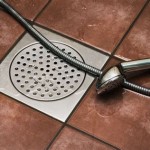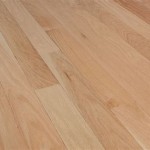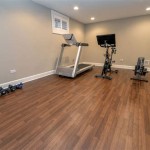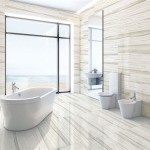Do It Yourself Kitchen Flooring
Kitchen flooring takes a beating. From dropped dishes and spilled liquids to heavy foot traffic, it needs to be durable and easy to clean. Fortunately, many attractive and resilient flooring options are available for the DIY homeowner. This article will explore several popular choices, discussing their pros, cons, and installation processes.
Vinyl Flooring
Vinyl flooring offers an excellent combination of affordability, durability, and ease of installation. Available in sheets, tiles, and planks, vinyl can mimic the look of more expensive materials like hardwood or stone. Sheet vinyl is the most budget-friendly option and is relatively simple to install, making it ideal for beginners. Vinyl tiles offer greater design flexibility and are easier to repair if a section becomes damaged. Luxury vinyl planks (LVP) and luxury vinyl tiles (LVT) offer enhanced durability and a more realistic wood or stone look, thanks to advanced printing and embossing techniques. These options often feature a click-lock installation system, further simplifying the DIY process. Vinyl is also water-resistant, making it a suitable choice for kitchens prone to spills.
Installing vinyl flooring typically involves preparing the subfloor, laying down adhesive (for sheet vinyl or some tile types), and carefully positioning the vinyl. Precise measurements and a sharp utility knife are essential for a clean, professional finish. Click-lock LVP and LVT require no adhesive, making installation even faster and easier.
Laminate Flooring
Laminate flooring is another popular DIY-friendly option. Constructed with a core of high-density fiberboard and a photographic layer topped with a protective wear layer, laminate offers the look of hardwood at a lower price point. It is relatively easy to install, with most products utilizing a click-lock system. Laminate is also durable and scratch-resistant, making it a good choice for busy kitchens. However, it is not as water-resistant as vinyl, so spills should be cleaned up promptly to prevent damage.
Installing laminate flooring involves preparing the subfloor, laying down an underlayment for moisture protection and sound reduction, and clicking the planks together. It's crucial to leave an expansion gap around the perimeter of the room to accommodate seasonal expansion and contraction of the flooring.
Engineered Hardwood Flooring
Engineered hardwood offers the warmth and beauty of real wood with enhanced stability compared to solid hardwood. It is constructed with a core of plywood or high-density fiberboard topped with a layer of real hardwood veneer. This construction makes engineered hardwood more resistant to moisture and temperature fluctuations than solid hardwood, making it a viable option for kitchens. Engineered hardwood can be nailed down, glued down, or installed using a floating click-lock system, depending on the specific product and subfloor.
Installing engineered hardwood requires careful planning and precise measurements. Nailing or gluing requires specialized tools and experience, while click-lock systems are more DIY-friendly. Proper acclimation of the wood to the room's temperature and humidity is essential before installation to prevent warping or buckling.
Tile Flooring
Ceramic and porcelain tiles offer exceptional durability, water resistance, and design versatility. They are available in a vast array of colors, patterns, and sizes, allowing for endless customization options. While tile is more challenging to install than vinyl or laminate, it is still achievable for a dedicated DIYer. However, working with tile requires specific tools, including a tile cutter, mortar mixer, and grout float.
Installing tile flooring involves preparing the subfloor, applying a layer of thin-set mortar, setting the tiles in place, and grouting the joints. Precise spacing and leveling are crucial for a professional-looking finish. Sealing the grout is essential to prevent staining and water damage.
Cork Flooring
Cork flooring provides a unique and eco-friendly option for kitchens. Made from the bark of cork oak trees, cork is naturally resilient, antimicrobial, and comfortable underfoot. It offers good insulation and sound absorption properties. Cork flooring is available in tiles and planks, often with a click-lock installation system, making it suitable for DIY projects. However, cork is susceptible to scratching and staining, so it's essential to choose a product with a durable protective coating.
Installing cork flooring is similar to installing laminate or click-lock engineered hardwood. Proper subfloor preparation is essential, and an underlayment may be necessary for added moisture protection and sound insulation.
Choosing the right kitchen flooring depends on various factors, including budget, lifestyle, and DIY skill level. By carefully considering the pros and cons of each option and following proper installation procedures, homeowners can successfully transform their kitchens with beautiful and functional new flooring.

13 Ideas For Upgrading Your Kitchen Floors Extra Space Storage

Kitchen Floor Ideas For 2025 Checkatrade

Laminate Kitchen Flooring Ideas 2025 Checkatrade

2025 Kitchen Flooring Trends 20 Ideas To Update Your Style

2025 Kitchen Flooring Trends 20 Ideas To Update Your Style

The Best Kitchen Flooring Options

13 Ideas For Upgrading Your Kitchen Floors Extra Space Storage

20 Best Kitchen Flooring Tile Ideas Tips And Trends

Kitchen Flooring Ideas Expert Guide On Choosing The Right Material
What Is The Best Flooring For A Kitchen Tarkett








